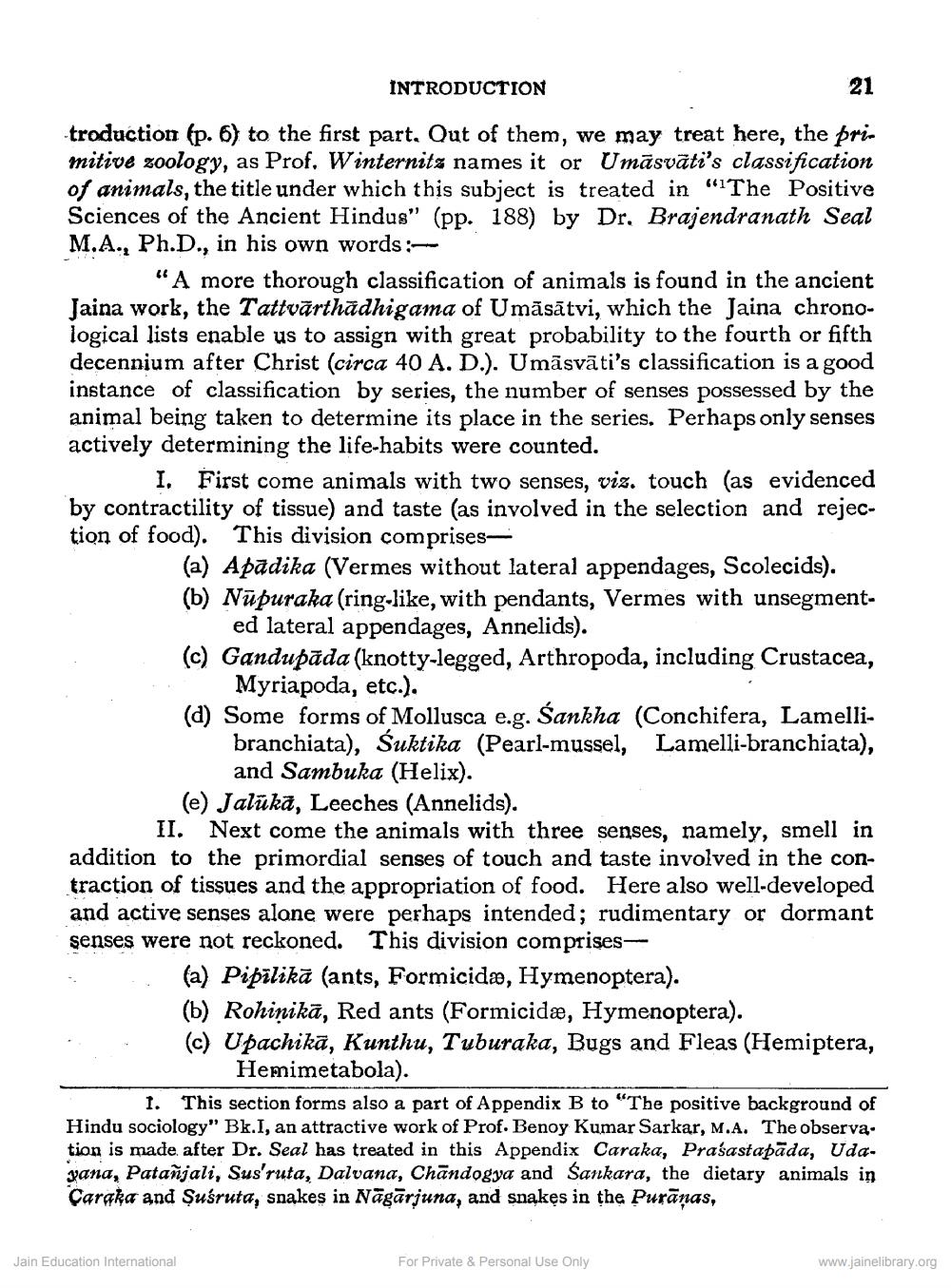________________
INTRODUCTION
21
troduction (p. 6) to the first part. Qut of them, we may treat here, the primitive zoology, as Prof, Winternitz names it or Umāsvāti's classification
nals, the title under which this subject is treated in "The Positive Sciences of the Ancient Hindus" (pp. 188) by Dr. Brajendranath Seal M.A., Ph.D., in his own words :
“A more thorough classification of animals is found in the ancient Jaina work, the Tattvārthādhigama of Umāsātvi, which the Jaina chronological lists enable us to assign with great probability to the fourth or fifth decennium after Christ (circa 40 A. D.). Umāsvāti's classification is a good instance of classification by series, the number of senses possessed by the animal being taken to determine its place in the series. Perhaps only senses actively determining the life-habits were counted.
1. First come animals with two senses, viz. touch (as evidenced by contractility of tissue) and taste (as involved in the selection and rejection of food). This division comprises
(a) Apadika (Vermes without lateral appendages, Scolecids). (b) Nūpuraka (ring-like, with pendants, Vermes with unsegment
ed lateral appendages, Annelids). (c) Gandupāda (knotty-legged, Arthropoda, including Crustacea,
Myriapoda, etc.). (d) Some forms of Mollusca e.g. Sankha (Conchifera, Lamelli
branchiata), Suktika (Pearl-mussel, Lamelli-branchiata),
and Sambuka (Helix). (e) Jalūkā, Leeches (Annelids).
II. Next come the animals with three senses, namely, smell in addition to the primordial senses of touch and taste involved in the contraction of tissues and the appropriation of food. Here also well-developed and active senses alane were perhaps intended; rudimentary or dormant senses were not reckoned. This division comprises
(a) Pipilikā (ants, Formicidæ, Hymenoptera). (b) Rohinikā, Red ants (Formicidæ, Hymenoptera). (c) Upachikā, Kunthu, Tuburaka, Bugs and Fleas (Hemiptera,
Hemimetabola). 1. This section forms also a part of Appendix B to "The positive background of Hindu sociology" Bk.I, an attractive work of Prof. Benoy Kumar Sarkar, M.A. The observa. tion is made after Dr. Seal has treated in this Appendix Caraka, Prasastapāda, Uda. yana, Patañjali, Sus'ruta, Dalvana, Chāndogya and Sankara, the dietary animals in Caraka and Şuśruta, snakes in Nāgārjuna, and snakes in the Purānas,
-
Jain Education International
For Private & Personal Use Only
www.jainelibrary.org




